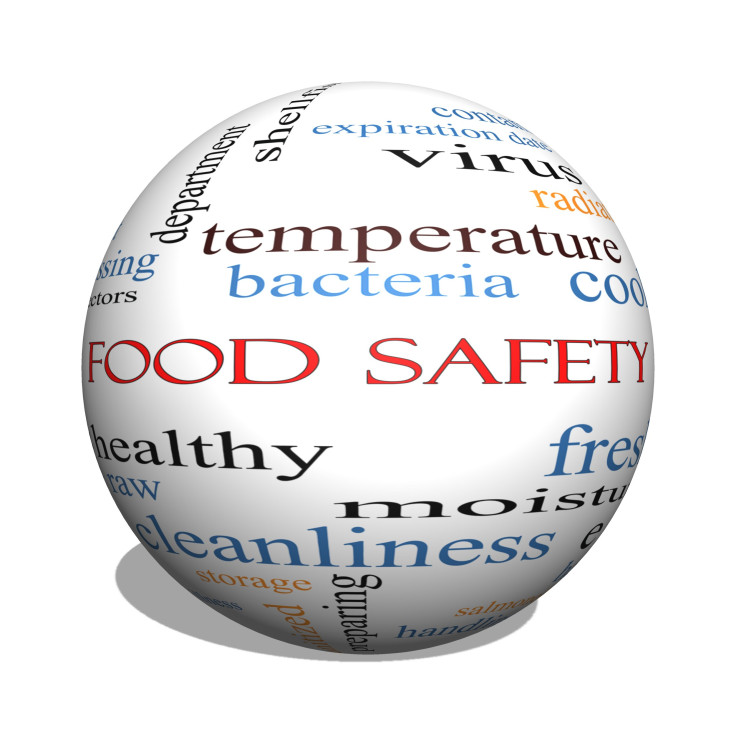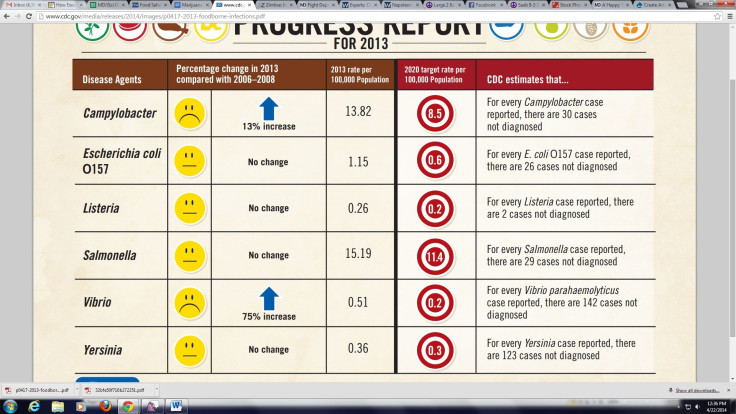The Foodborne Illness Problem: U.S. Food Safety Standards Still Don't Protect Against Bacteria

An “ordained minister” preaches from his Brooklyn, N.Y., subway train platform one morning not about salvation but safety — a grassroots health message concerning adolescent abuse of the dangerous K2 spice.
And with that plot twist, everyone listens. Now, if only the Food and Drug Administration could make some quick and easy progress of their own, particularly with regard to safeguarding the nation’s food supply. Though touting some incremental gains, the Centers for Disease Control and Prevention (CDC) this week released an annual report showing most measurements of food safety remaining about the same since the period between 2006 and 2008.
Among other pathogens, infections from salmonella fell by nine percent to levels recorded during those previous three years, says Dr. Robert Tauxe, the deputy director of CDC’s division of foodborne, waterborne, and environmental diseases.

“CDC data are essential to gauge how we’re doing in our fight against foodborne illness,” Tauxe said in a statement. “This year’s data show some recent progress in reducing salmonella rates, and also highlight that our work to reduce the burden of foodborne illness is far from over. To keep salmonella on the decline, we need to work with the food industry and our federal, state and local partners to implement strong actions to control known risks and to detect foodborne germs lurking in unsuspected foods.”
The rate of campylobacter infections, a risk associated with chicken and dairy, rose 13 percent during that period, while vibrio infections mostly from raw shellfish reached the highest levels since the federal government began tracking them in 1996. Those infections rose 75 percent during recent years. Meanwhile, the rate of infections from Vibrio vulnificus — the most severe kind — remained steady even as the U.S. population grew from 298 million in 2006 to some 317 million this year.
Chris Waldrop, the director of the Food Policy Institute at Consumer Federation of America, characterized the country’s lack of progress on improving food safety. “For most pathogens, we haven’t really been able to move the needle in recent years,” he said in a statement. “The decrease in salmonella illnesses is positive, but it’s too early to tell if that will be sustained.”
Some 48 million Americans are sickened by food poisoning every year, though only 128,000 require emergency room care. FDA officials say the Food Safety Modernization Act of 2011 may help to lower some of these foodborne safety risks — should Congress decide to provide adequate funding for the regulations. Among strategies for reducing the rate of food poisoning, the federal government would like to standardize methods for the slaughtering and inspection of poultry.



























